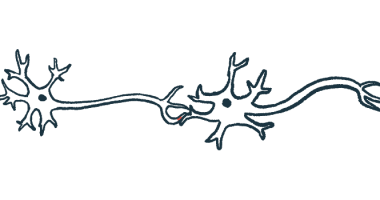Memory Recall in Rett Mice Improved By Activating Brain Cells

Scientists were able to improve memory recall in Rett syndrome mice by activating a set of inhibitory brain cells called somatostatin-expressing interneurons (SOM), in part by using a miniature microscope that allowed them to monitor the animals’ neurons.
Deficiencies in the SOM nerve cells contributed to impairments in long-term memory in the Rett mouse model, the study showed.
“This is the first study to demonstrate that upregulating the activity of SOM neurons can improve memory recall and retrieval capacity in Rett mice,” Huda Zoghbi, MD, a professor at Baylor College of Medicine and the study’s senior author, said in a university press release.
“It opens exciting areas of research to explore therapeutic possibilities that could improve contextual memory recall in individuals affected by Rett syndrome,” Zoghbi said.
The study, “A weakened recurrent circuit in the hippocampus of Rett syndrome mice disrupts long-term memory representations,” was published in the journal Neuron.
Rett syndrome is a rare, genetic, neurodevelopmental disorder that affects almost exclusively girls. Key among its non-motor symptoms are substantial learning and memory difficulties.
In mouse models of Rett, contextual memory is impaired. This is a type of memory relating to the ability to recall previous events and the context in which they occurred.
During a memory’s formation and its later recall, the same set, or ensemble, of the brain’s nerve cells (neurons), will fire. The appropriate balance of excitatory, or “go” signals, and inhibitory, or “stop” signals to neurons in a brain region called the hippocampus is necessary to fine-tune which neurons are activated and to allow proper memory recall.
It has been proposed that this excitatory-inhibitory or so-called “E/I balance” is disrupted in Rett Syndrome. To better understand the source of this imbalance, the researchers examined hippocampal neuron activity during a memory task in female mice lacking the MeCP2 protein, whose production is impaired in most Rett patients.
To monitor contextual memory, the mice performed a task called fear conditioning, in which they were placed in a chamber and exposed to mild foot shocks. One hour (short-term) and one day (long-term) later, the mice were placed back into the chamber, but were not shocked.
Normally, mice will remember the chamber, where the shock was administered, and exhibit fearful freezing behaviors. Results showed that while short-term memory was intact, Rett mice froze 57% less than wild-type or normal mice one day after the shock, suggesting an impairment in long-term memory.
While performing the task, a small microscope implanted into the skulls of the mice was able to monitor the activity of pyramidal neurons — the main excitatory neurons in the hippocampus.
Data showed that Rett mice had a greater number of pyramidal neurons that fired simultaneously, called a neuron ensemble, during long-term recall of a fearful memory compared with healthy mice, which the researchers thought may underlie the memory deficit.
Recordings in brain slices found that in the hippocampus of Rett mice, a subset of SOM interneurons — a type of inhibitory neuron — were under-activated compared with those in healthy mice.
SOMs usually play an important role in inhibiting pyramidal neurons, thus regulating the formation of ensembles during memory development. Their under-recruitment in Rett, and the resultant reduction in inhibition, likely underlies the large ensembles and subsequent long-term memory deficits, the team noted.
The reduced inhibition also may be related to the later development of seizures that is typically observed in Rett patients, they added. Of note, seizures also are often associated with reduced inhibition in the hippocampus.
Using a chemogenetic approach, a technique that allows for the specific activation of certain cell types, the team activated SOMs in the hippocampus of the Rett mice. When they did this, fear memory recall was restored to normal levels.
According to the team, the results altogether suggest that impaired SOM signaling underlies memory problems in Rett, and could potentially be therapeutically targeted.
In particular, deep brain stimulation, a therapeutic technique used in patients with a range of neurological diseases, could be used to target a brain region called the medial septum, which provides inhibitory input to the hippocampus. This may be a promising approach for both cognitive and seizure symptoms in Rett, the team suggested.
“This dual role of cognitive improvement and seizure prevention makes the medial septum an attractive target for [deep brain stimulation] intervention,” they wrote.
The team noted that their findings could be applied beyond Rett syndrome.
“These findings have a much broader implication and are also applicable to other neurological disorders in which the development and function of inhibitory circuits are altered,” said Zoghbi.







